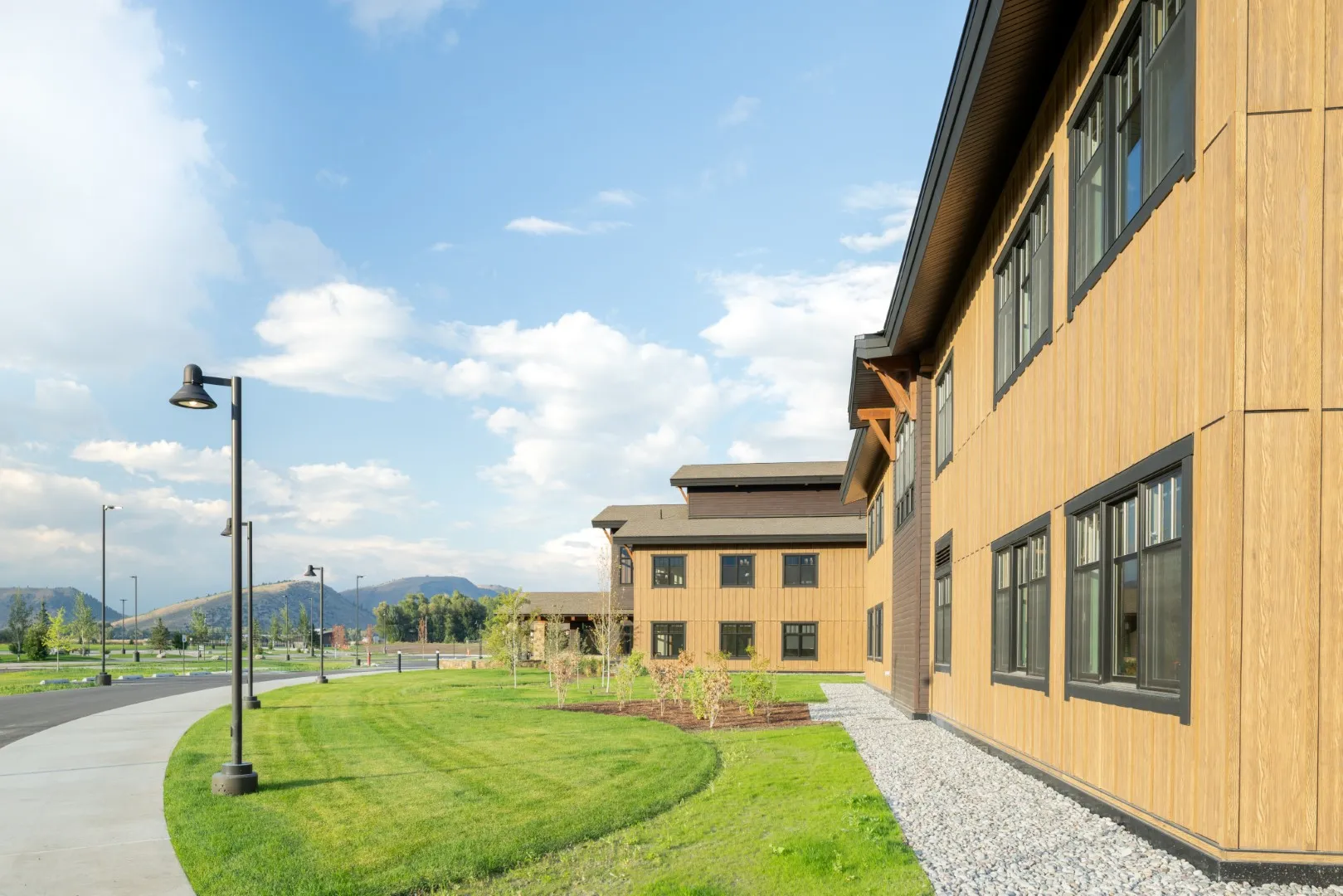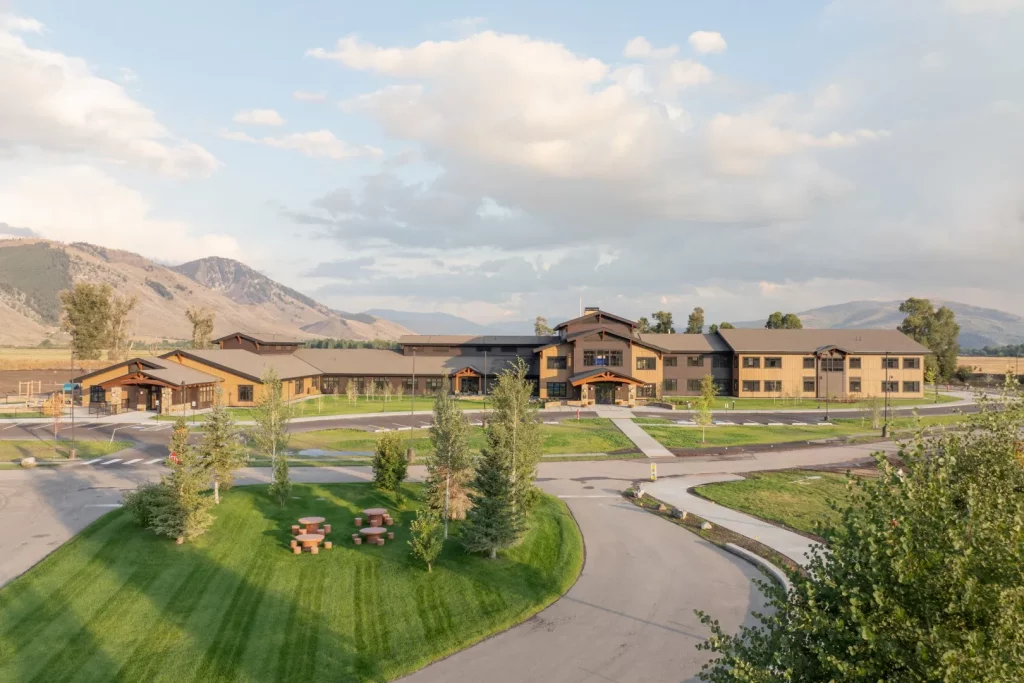
The successful delivery of an award-winning construction project hinges on more than just adhering to deadlines and budgets. It requires intensive pre-construction planning, adaptable problem-solving, and the strategic use of technology. In a recent multi-use commercial development, High Country Solutions played a crucial role, providing specialized project management and technology integration. Our hands-on contributions were pivotal in addressing complex building envelope challenges. This included the expert application of spray foam insulation for the roof, walls, and ceiling, the installation of interior sound insulation, and the application of specialized intumescent coatings. Working in close collaboration with the teams at GE Johnson and DPR Construction, we diligently tackled the intricate demands of this project. This comprehensive involvement proved instrumental in overcoming logistical hurdles and achieving the high standards of quality and innovation that earned the project industry recognition.
Every landmark construction project begins with a detailed plan. The vision for this initiative was to create a sustainable and community-centric commercial space. During the pre-construction phase, our expertise was engaged to help transform that vision into a tangible blueprint. This involved extensive collaboration with architects, engineers, and stakeholders to define clear objectives, conduct thorough risk assessments, and establish a realistic budget and timeline.
A significant part of this stage was aligning all parties on the project’s ambitious goals. We participated in numerous workshops and meetings to ensure a shared understanding of the design intent, material specifications, and performance targets, particularly concerning the building’s thermal envelope. As specialists in insulation, our early involvement was key to integrating a superior insulation strategy from the outset. As highlighted by the Construction Management Association of America (CMAA), thorough pre-construction planning is fundamental to mitigating risks and ensuring project success by aligning all stakeholders before breaking ground.
Bonus Tip: Engaging insulation specialists during the design phase ensures that the building envelope is optimized for energy efficiency and performance from the very beginning. This proactive approach to insulation can lead to significant long-term energy savings.
No construction project is without its challenges. This one encountered several, from supply chain disruptions for key materials to unforeseen ground conditions. Our strategy for managing these issues was built on flexibility and clear communication. When a specified building material became unavailable, our team worked closely with structural engineers to quickly approve an alternative that met all performance standards without impacting the schedule.
Our direct involvement extended to the physical construction and insulation of the building. As the structure took shape, our team was on-site, contributing to the general construction efforts. Following the main build, we transitioned to our specialized role in insulating the entire structure. This included the meticulous application of spray foam insulation, which creates a seamless air and moisture barrier. According to the Spray Polyurethane Foam Alliance (SPFA), this monolithic barrier is a key advantage of spray foam, as it strengthens the building envelope against air and moisture infiltration, which is critical for both durability and energy efficiency.
Our efforts were also recently highlighted in a press release covering this milestone project, showcasing our commitment to excellence and innovation in large-scale construction.
We started the project in roughly May 2024 and ran through August 2025. This was a complex project with different building envelope challenges that we worked diligently on in cooperation with the team at GE Johnson and DPR Construction. We provided spray foam insulation to the roof, walls, and ceiling, blow-in insulation to the ceiling, interior sound insulation, and intumescent coatings throughout the school.
Our unique position as both a participant in the construction and the primary insulation contractor allowed for a seamless and efficient workflow. This integrated approach ensured that the insulation was not just an afterthought but a core component of the building’s performance.
| Aspect | Traditional Method | Our Integrated Method | Outcome |
|---|---|---|---|
| Insulation Planning | Addressed after primary construction | Integrated into the initial design and construction phases | A more effective and cohesive building envelope, leading to superior energy performance. |
| Execution | Separate teams for construction and insulation | A single, coordinated team involved in both phases | Minimized communication gaps and streamlined the transition from construction to insulation. |
| Quality Control | Insulation inspected upon completion | Continuous quality checks throughout the construction and insulation process | Ensured optimal application and performance of the insulation systems. |
| Problem-Solving | Insulation challenges addressed reactively | Proactive identification and resolution of potential insulation issues during construction | Reduced the need for costly and time-consuming rework. |

Technology was a central element of our execution strategy. Building Information Modeling (BIM) served as the digital backbone for the entire project. As industry leaders like Autodesk explain, BIM creates a detailed 3D model that allows teams to identify potential system clashes before construction begins, saving significant time and money by preventing on-site rework. This model was not only used for clash detection but also to meticulously plan the application of our spray foam and insulation materials, ensuring complete coverage and optimal performance. The use of drones for site surveying and progress monitoring provided data that was both faster and more accurate than traditional methods.
Bonus Tip: When selecting technology, focus on tools that solve specific challenges. For insulation contractors, software that helps visualize and plan the application of materials can significantly improve efficiency and quality.
Beyond technology and planning, several fundamental elements were crucial to the project’s positive outcome.
For any organization considering a large-scale construction project, several factors should be carefully evaluated.
Bringing a complex building from blueprint to reality is a multifaceted process. The success of this award-winning initiative underscores the value of detailed planning, strong team collaboration, and the strategic integration of specialized expertise. Our dual role in both the construction and insulation phases was a testament to the benefits of a holistic and integrated approach.
Planning a construction project with energy efficiency and long-term performance in mind? Get expert guidance from High Country Solutions, specialists in spray foam and insulation services designed to enhance comfort and reduce energy costs. Our team can review your plans and provide strategic advice on both insulation solutions and construction performance. Start the conversation today by emailing [email protected] or calling (307) 248-9063 to schedule your initial consultation.
Early involvement allows for the integration of the best insulation strategies into the initial design, optimizing energy efficiency and preventing costly retrofits later on.
Spray foam insulation provides a superior air and moisture barrier, enhances structural integrity, and offers excellent thermal performance, leading to significant energy savings over the building’s lifetime. It also contributes to better indoor air quality by reducing the infiltration of dust and allergens.
Effective coordination relies on clear communication and integrated planning. By being involved in the general construction, we can seamlessly transition to the insulation phase, ensuring no delays and a cohesive workflow.
Our ability to contribute to the initial construction and then apply our specialized insulation expertise allowed for a holistic approach to the building envelope. This ensured that every detail was considered from both a structural and a thermal performance perspective, resulting in a superior final product.